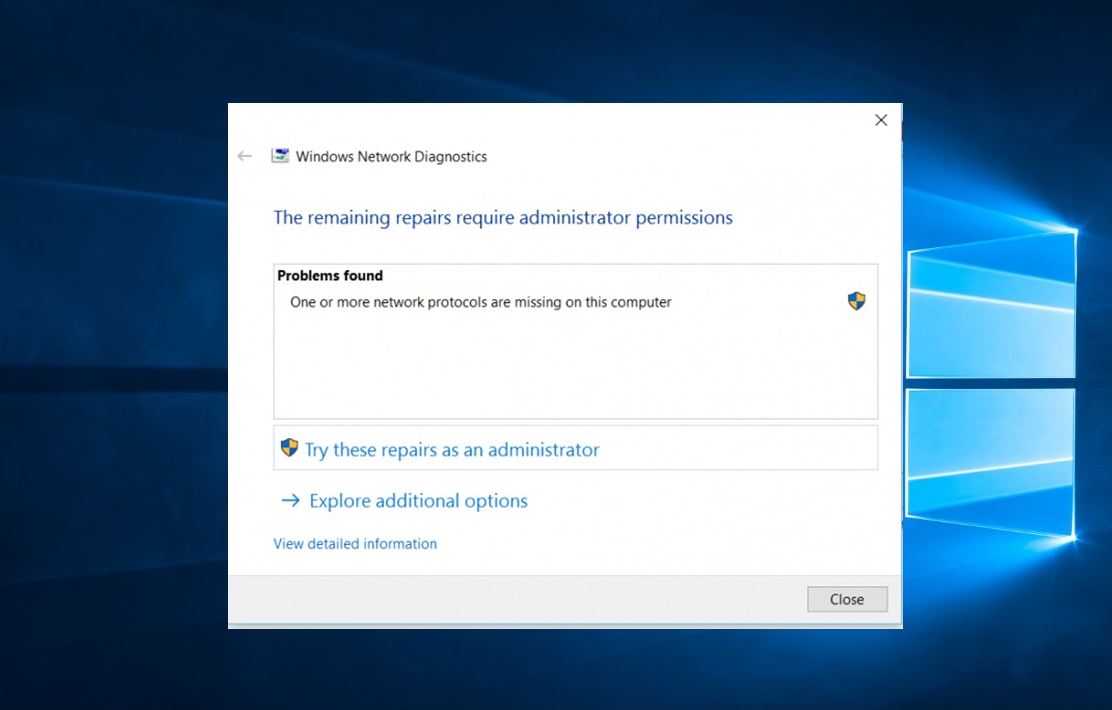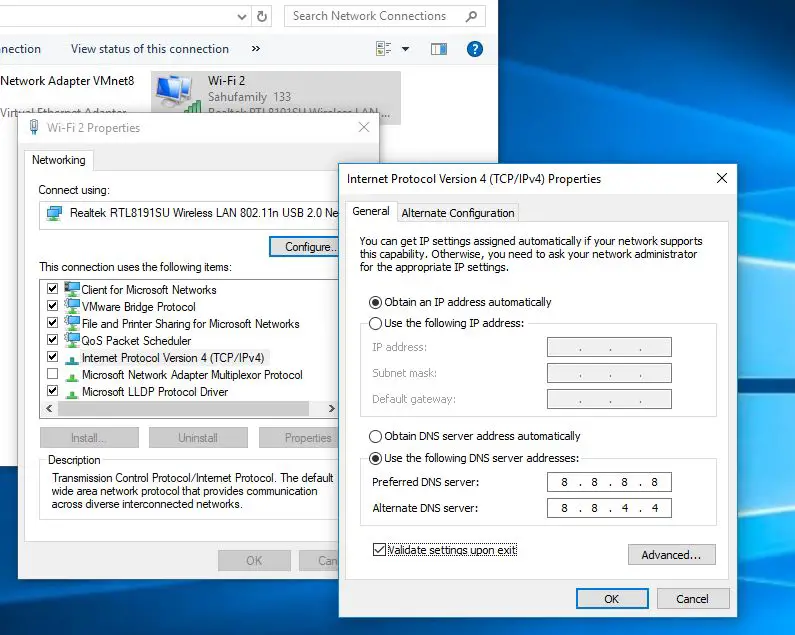Suddenly your Wi-Fi or any other Internet connection stops working. Although Wifi says it has internet access, but cannot open any websites and there is no sign of Internet connectivity. And trying to diagnose the issue using build-in network troubleshooter (by right-click on the Network icon in Taskbar notification) results “One or More Network Protocols Are Missing on this computer” or ‘Windows sockets registry entries are missing. In most cases, incorrect network configuration or inconsistency in Windows Sockets API also known as Winsock is the root cause of this problem.
Network Protocols are missing windows 10
Well, network problems are common and it can start anytime with different errors. If you are getting “one or more network protocols are missing on this computer” or windows sockets registry entries for network connectivity are missing apply the solutions listed below.
- Temporarily Disable Third-party Antivirus software and disconnect from VPN (If configured on your computer.
- Disable proxy from Settings -> Network -> Proxy -> Manual Proxy Settings and turn it off.
- Unplug the ethernet cable from your computer and plug it in again. Check the network connection.
- Restart your network device (router, modem) include your PC
Restore network protocols to default settings
Let’s first reset the network configuration and network protocols to its default state following the command below.
- Open the command prompt as administrator,
- Type command netsh int ip reset and press the enter key,
- This will reset or reinstall the TCP/IP protocol on your computer.
- Reboot your PC and check the network protocol missing error is fixed.
Well if the command output result Resetting failed, Access is denied (refer to image below) which means you need to take ownership and permission of the key is required to be able to successfully. And to do this
- Press Windows key + R, type regedit, and click ok,
- This will open Windows registry editor lets navigate to following key: HKEY_LOCAL_MACHINE\SYSTEM\ControlSet001\Control\Nsi\{eb004a00-9b1a-11d4-9123-0050047759bc}\26
- Right-click on the 26 key, and select the Permissions option.
- This will open a new window, Select Everyone from the usernames list and check to enable the “Allow” checkbox given for “Full Control” permission.
- Click on apply and ok to make save changes and close the registry editor window.
- Again open the command prompt (as administrator)
- Type netsh int ip reset command to Reinstall the TCP/IP protocol without any deny error.
- Next run command netsh winsock reset
Once done reboot your PC and check if the problem is solved, and you are able to access internet/web pages without any problem. Still need help apply the next solution.
Disable NetBIOS
Several windows users report, that Disabling the NetBios over TCP settings helped them fix this one or more network protocols are missing on this computer windows 10.
- Press Windows key + R, type ncpa.cpl and click ok,
- This will open the network connections window, and locate your active network adapter (Wifi/Ethernet)
- Right-click on active network adapter select properties,
- In Ethernet, properties Highlight IP v4 (TCP/IP) and choose Properties.
- Now on the Internet protocol version 4 (TCP/IP) Properties window click on Advanced.
- Go to the WINS tab, and select the radio button Disable NetBIOS over TCP/IP (refer to the image below).
- Click ok to make save changes, Restart windows and check your problem is fixed.
Reconfigure the Networking connection setting
Let’s reconfigure your network configuration settings that probably help fix the problem.
Type cmd on windows search, right-click on command prompt and select run as administrator, Now perform the following commands one by one and press the enter key after each.
- netcfg -d
- ipconfig /release
- ipconfig /renew
- ipconfig /flushdns
- ipconfig /registerdns
Once done reboot your PC and check if the problem is resolved.
Switch to Google DNS
- Press Windows + R, type ncpa.cpl and click ok
- This will open the network connection window,
- Right-click on active network adapter select properties,
- Double click on internet protocol version 4 (TCP/IPv4),
- Select the radio button Use the following DNS server address and set preferred DNS server 8.8.8.8 and Alternate DNS server 8.8.4.4
- Checkmark on validate settings upon exit, and click ok to save changes.
- Now check if network protocols are missing error resolved.
Fix Windows Sockets Entries in Registry Editor
If everything fails, then you’ll need to fix Windows Sockets entries in Registry Editor manually.
On a working windows 10 computer open registry editor using regedit and navigate HKEY_LOCAL_MACHINE\SYSTEM\CurrentControlSet\Services\Winsock
Right-click on Winsock and select export. select a location (USB drive) give any name and save the winsock registry backup. Do the same with Winsock2
Now switch to a Windows 10 computer that has issues with Network Protocols.
Right-click on winsock and delete. Do the same with Winsock2
The entries are present under the following key in Registry Editor:
HKEY_LOCAL_MACHINE\SYSTEM\CurrentControlSet\Services\Winsock
HKEY_LOCAL_MACHINE\SYSTEM\CurrentControlSet\Services\WinSock2
Restart the windows and re-add the same keys taken from a working computer, which doesn’t contain this problem.
open command prompt as administrator and run command netsh winsock reset
That’s all, reboot your PC and check there is no more network protocol missing error present on windows 10.
Repair Corrupted System Files
Above are some good methods to fix One or More Network Protocols are Missing on This Computer problem on windows 10. If after performing this still you getting the error you can check windows for corrupted system files. as we know corrupt system files can cause many errors for windows and maybe this error is one of them. It’s recommended to Run the Windows SFC utility to check and repair corrupt system files.
These are some best solutions to fix One or More Network protocols are Missing on This Computer for Windows 10, 8.1 and 7 computers. Have any queries or new suggestions feel free to comment below.
Also read:





